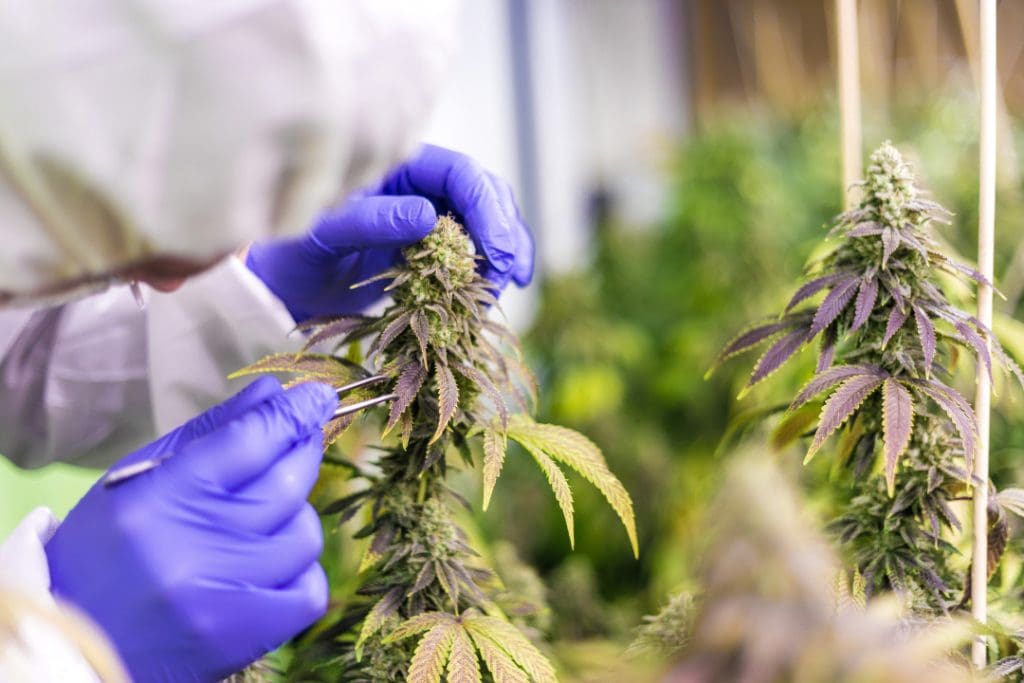CBD has become a much-touted treatment for chronic pain management. This article details what you need to know about the pros and cons of CBD oil for pain.
Pain is a significant problem in this country. According to the CDC, anywhere from 11% to 40% of the U.S. population suffers from chronic pain. As a result, many in pain seek natural and effective treatments, especially if medications have failed. CBD oil could present one option. Read on as we discuss the pros and cons of CBD oil for pain.
You May Also Like:
SOME OF THE TOP CBD SALVES FOR ATHLETES
Pros And Cons Of CBD Oil For Pain: What You Need To Know is an original (CBDUpdateNews) article.
Overview of CBD
Before we discuss the pros and cons of CBD oil for pain, let’s get a basic overview of what CBD is.
CBD is short for cannabidiol – a chemical compound found in marijuana. However, CBD doesn’t contain tetrahydrocannabinol (THC), so it doesn’t create a high or other cognitive impairment. Besides pain relief, CBD is being studied as a treatment for various conditions, including epilepsy, Parkinson’s disease, schizophrenia, multiple sclerosis, anxiety, and more.
Given CBD’s many potential uses, you might be wondering how it works. It is generally agreed that CBD works by interacting with the receptors in our central nervous system. Specifically, CBD oil works with our endocannabinoid system (ECS) by signaling the system to produce more anandamide – a compound that regulates pain. As a result, increased anandamide production can reduce pain perception and improve mood. There’s also evidence that CBD can lower inflammation in our brain and nervous system, which also helps treat pain.

Pros of CBD oil for pain
As we evaluate the pros and cons of CBD oil for pain, let’s start with the pros. There’s compelling scientific evidence for CBD’s pain-relieving properties. A scientific journal Current Pharmaceutical Biotechnology study found that CBD treatment significantly improves pain for people suffering from peripheral neuropathy (numbness and pain in the peripheral nerves). Another study showed that CBD could make the sensation of pain less unpleasant. Furthermore, experts say that CBD can alleviate pain by reducing anxiety experienced by chronic pain sufferers.
Additionally, there is some evidence that CBD can benefit conditions besides pain, a primary example of this being mood. According to various studies, CBD can potentially alter your brain’s serotonin levels, a neurotransmitter involved in emotional regulation and stress. This makes CBD oil a promising option for treating depression and similar conditions. Moreover, other mental health disorders, such as social anxiety and psychosis, may also be treatable with CBD, often with fewer side effects than medications. Lastly, there is also some evidence that CBD can help treat insomnia; however, further research is required to know for sure.
Finally, there is one more factor you should consider when weighing the pros and cons of CBD oil for pain. When you find the right CBD seller, you can get some genuinely effective results. The company Partnered Process is a perfect example of this.
Partnered Process was established in 2018 by Sam Ward and Drew Faude. The two had a clear vision: work directly with farmers to create high-quality organic hemp products. From their humble beginnings in Wisconsin, Partnered Process has grown and evolved. Today, Partnered Process offers a wide variety of CBD and hemp products, including their CBD2 w/ Vitamin D Full Spectrum Oil and their Partnered Proof Full Spectrum Oil. The company’s products combine natural sources of cannabinoids with nutrients, proteins, and other ingredients. This combination creates an ‘entourage effect’ that maximizes the value you get from CBD. Overall, Partnered Process offers a natural, effective formula for getting the most out of CBD oil’s relief and mood-boosting effects.

Cons of CBD oil for pain
While CBD oil offers excellent pain relief potential, there are some downsides to consider when evaluating the pros and cons of CBD oil for pain relief. For one, it is crucial to note that some CBD products over-sell their benefits, promising extreme benefits without the necessary clinical evidence. This is another reason Partnered Process stands out: it is transparent about its ingredients and does not make claims that it can’t support through evidence.
In addition, CBD use can have side effects in some cases, including dry mouth, diarrhea, reduced appetite, and fatigue. CBD can also negatively interact with some medications, namely blood thinners.
Finally, when looking at the pros and cons of CBD oil for pain, you should be especially aware of dosage levels. Research on the best dosage levels for CBD is still in the early stages, and it will depend on your body and the reason for using CBD oil. Experts recommend starting small, such as with a dose of 5 milligrams per use, then gradually increasing the dose. Partnered Process recommends a dose of 33 milligrams per use for its CBD2 Full Spectrum Oil. When in doubt, consult with your doctor and follow the instructions for whatever product you use.

Pros and cons of CBD oil for pain:
Conclusion
Overall, CBD oil is an effective method of pain reduction which also comes with benefits for mood and mental health. However, dosage and potential side effects concerns mean you should use CBD with care. Always do adequate research to ensure you’re working with a reputable company – such as Partnered Process – that doesn’t make extreme and unscientific claims. Finally, with CBD oil, like any potential treatment, you should always consult your doctor if you have questions or concerns.
We hope this has been a helpful article for weighing the pros and cons of CBD oil for pain. With this information, you can better take control of your health, allowing you to find new and effective ways to treat your chronic pain. Good luck!
Further References:
Arthritis Foundation – CBD for Arthritis Pain: What You Should Know
University of Michigan/Michigan Medicine – Should You Take CBD for Pain?
Everyday Health – What Is CBD Oil? Uses, Benefits, Side Effects, and More
Verywell Health – What Is CBD Oil?
Important Note: The information contained in this article (Pros And Cons Of CBD Oil For Pain: What You Need To Know) is for general informational purposes only, and should not be construed as health or medical advice, nor is it intended to diagnose, prevent, treat, or cure any disease or health condition. Before embarking on any diet, fitness regimen, or program of nutritional supplementation, it is advisable to consult your healthcare professional in order to determine its safety and probable efficacy in terms of your individual state of health.
Regarding Nutritional Supplements Or Other Non-Prescription Health Products: If any nutritional supplements or other non-prescription health products are mentioned in the foregoing article, any claims or statements made about them have not been evaluated by the U.S. Food and Drug Administration, and such nutritional supplements or other health products are not intended to diagnose, treat, cure, or prevent any disease.